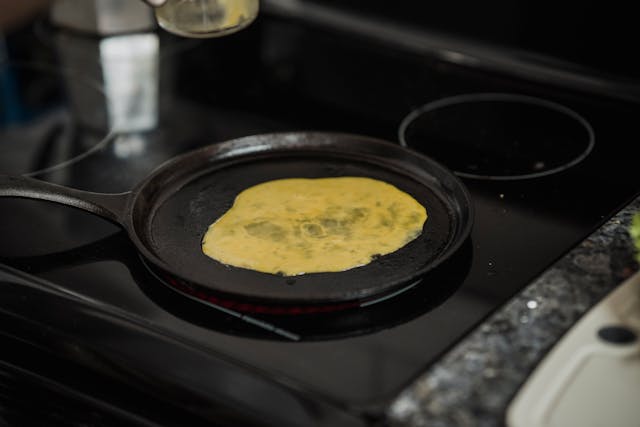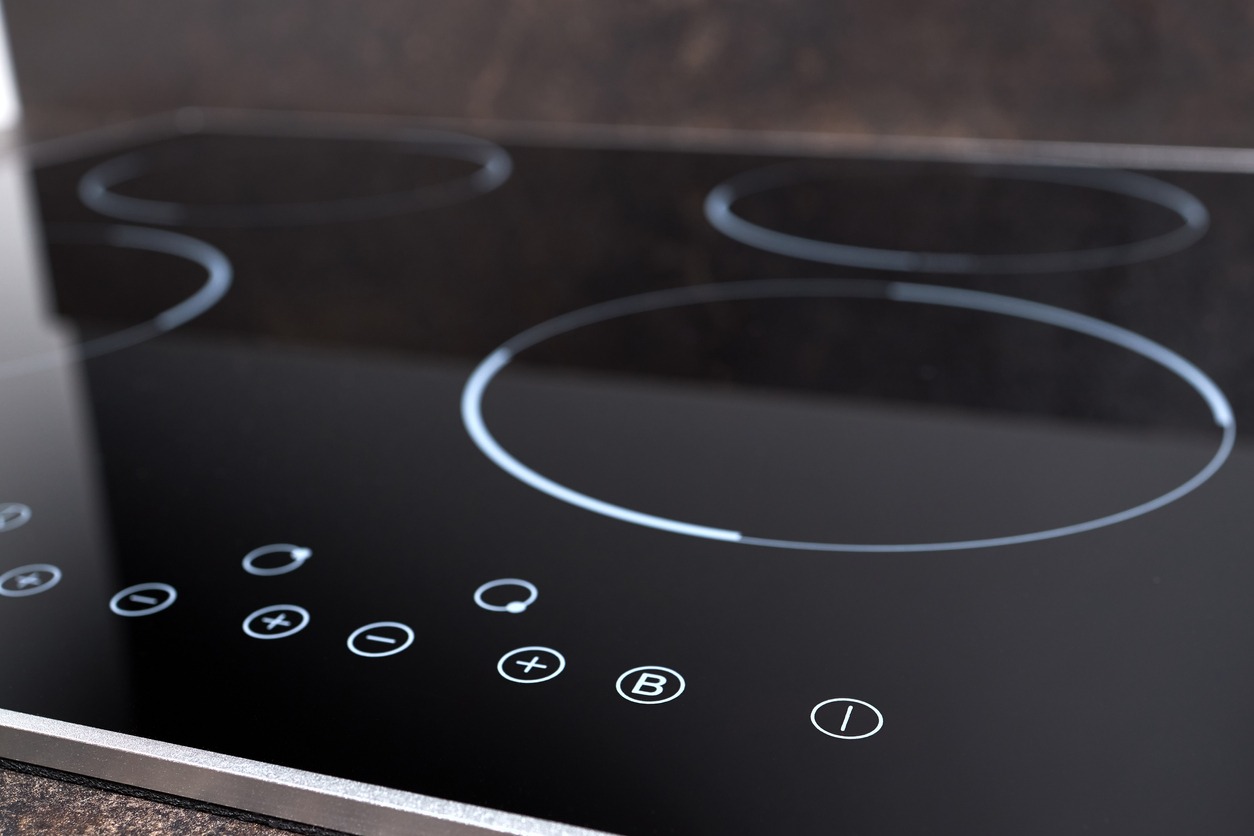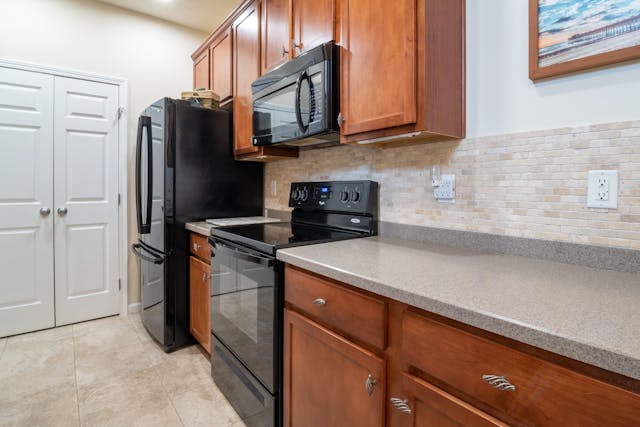Induction stoves have revolutionized the way we cook by introducing a high-efficiency method that offers rapid, precise, and energy-saving cooking. Unlike traditional electric or gas stoves, induction stoves utilize electromagnetic fields to directly heat the cookware while leaving the surface cool to the touch. This level of control and efficiency is due to an electromagnetic field below the surface of the stove that reacts only with magnetic materials, which means that only the pot or pan heats up, not the cooktop itself.
The efficiency of induction cooking comes from its ability to transfer energy directly into the cookware, minimizing the loss of heat to the surrounding air and cooking environment. Consequently, induction stoves are known for their quick cooking times and responsiveness to temperature adjustments. However, it is essential to use compatible cookware—those made of or containing iron—since the induction process depends on magnetism. Cookware must be magnetic or marked as ‘induction safe’ to be functional on these stoves.
Additionally, induction cooktops offer a sleek and modern design, blending seamlessly with contemporary kitchen aesthetics. Safety is enhanced because the cooking surface stays relatively cool, reducing the risk of burns common with traditional stovetops. Overall, induction cooking technology offers a combination of speed, precision, and safety, making it an attractive option for both home cooks and professional chefs alike.
Understanding Induction Technology
Induction stoves represent a significant advancement in cooking technology, harnessing the principles of electromagnetic fields to directly heat cookware, resulting in efficient and precise temperature control.
Principles of Induction Cooking
Induction cooking uses an electromagnetic field produced by an electric current that flows through a coil situated beneath the cooktop. When a pot or pan that contains a ferrous material, such as cast iron or some stainless steels, is placed on the cooktop, the magnetic field induces small electrical currents in the cookware. These currents, also known as “eddy currents,” generate heat due to the electrical resistance in the cookware, which then heats the food inside.
Key aspects of induction technology:
- Direct Heat: Unlike traditional cooking methods, induction heating directly warms the pot or pan, not the cooktop surface.
- Efficiency: Induction cooktops are typically more energy-efficient than their gas or electric counterparts because less heat is wasted.
- Control: The cooking environment remains cooler as heat is generated inside the cookware, leading to a precise and controllable cooking process.
Comparing Induction to Gas and Electric Ranges
When comparing induction stoves to gas and electric ranges, several differences are noteworthy in terms of efficiency, cooking speed, and safety.
Gas Stoves:
- Operate on thermal conduction, where heat is transferred from the flame to cookware.
- Generally liked for their quick heat-up times and visual control of the flame.
Electric Stoves:
- Utilize resistance in coils to generate heat, which is then transferred to the cookware.
- Often slower to heat up and cool down compared to both gas and induction.
Induction:
- Can be 5 to 10 percent more energy-efficient than conventional electric ranges.
- Heat is generated almost instantaneously within the cookware, resulting in faster and more responsive cooking experiences.
| Feature | Induction | Gas | Electric |
|---|---|---|---|
| Heat Generation | Magnetic Field | Flame | Heated Coils |
| Efficiency | High | Moderate | Moderate |
| Response Time | Fast | Fast | Slow |
| Temperature Control | Precise | Moderate | Moderate |
Induction technology offers a unique combination of speed, precision, efficiency, and safety that can enhance cooking experiences for both professional chefs and home cooks alike.
Types of Induction Stoves
Induction stoves come in various designs to accommodate different kitchen layouts and cooking preferences. They offer a modern approach to cooking with enhanced safety and energy efficiency.
Freestanding Induction Ranges
Freestanding induction ranges are versatile and designed to fit anywhere in the kitchen. They have finished sides and a backsplash control panel. These ranges often include an oven and possibly additional storage space. Freestanding models are popular for their ease of installation and ability to stand alone, not requiring a custom countertop fit.
Slide-In Induction Ranges
Slide-in induction ranges are designed to fit flush with kitchen countertops, providing an integrated look. They typically do not have a high backsplash and controls are located on the front or top. Slide-ins create a seamless appearance and often feature overlapping edges that eliminate gaps between the range and the countertop. They often require more precise sizing and installation compared to freestanding units.
Induction Cooktops
Induction cooktops are installed directly into the countertop and do not include an oven. They provide a sleek, flat surface that takes up less vertical space, often resulting in a sleek and modern aesthetic. Cooktops can have multiple burners and varying sizes, offering flexibility for different pot and pan dimensions. Induction cooktops can be an excellent choice for kitchen islands or smaller kitchens where saving space is crucial.
Key Features and Advancements
In recent years, induction stoves have incorporated a host of new features and advancements, enhancing safety, cooking efficiency, and convenience. Notable improvements include sophisticated safety mechanisms, versatile cooking modes, and seamless integration with smart home technology.
Safety Features
Induction ranges boast superior safety features, utilizing magnetic properties to heat cookware while keeping the cooktop itself relatively cool to the touch. This cool-to-touch technology significantly reduces the risk of burns. Additionally, some models offer a safety lock function, preventing accidental changes in settings or activation by children.
- Touchscreen controls: Provides precise control while being easy to clean.
- Bridge Mode: Allows for the connection of two cooking zones for larger cookware, providing flexibility and safety by heating the pan directly, not the surface.
Innovative Cooking Modes
Today’s induction ranges come equipped with various cooking modes that cater to an array of culinary techniques:
- Air Fry: Delivers crispy food without the need for excessive oil, pairing health-conscious eating with convenience.
- Air Sous Vide: Offers the ability to precisely control temperature over extended periods, enabling gourmet home cooking with restaurant-level results.
Smart Home Integration
The integration of induction stoves with smart home technology is a significant leap forward. Key features include:
- Wi-Fi Connectivity: Allows for the monitoring and adjustment of stove settings remotely.
- Voice Control: Compatible with voice-controlled assistants for hands-free operations, adding another layer of convenience and accessibility.
- Smart Slide-In Induction Range: These appliances typically come with touchscreen displays and can be controlled remotely, offering homeowners the convenience of preheating, adjusting temperatures, or turning off the stove with a smartphone app.
By leveraging these key features and advancements, induction stoves cater to a modern lifestyle where safety, culinary diversity, and technological convenience are paramount.
Selecting Compatible Cookware
When opting for induction cooking, consumers need to specifically search for pots and pans that are responsive to magnetic fields. Certain materials and design features ensure compatibility and performance on induction cooktops.
Material Compatibility
Induction-Compatible Cookware generally includes two primary materials: cast iron and stainless steel. Cookware made from either material will work well with induction cooktops due to their magnetic properties. However, not all stainless steel is created equal; the cookware must have a base containing iron to be compatible.
- Cast Iron: Offers excellent heat retention
- Stainless Steel: Must have a magnetic grade, such as 18/0 or 430
Cookware Design
Induction cooktops require pots and pans with a flat and smooth bottom, as this allows for adequate contact with the cooktop. The coil within an induction cooktop generates a magnetic field that heats the cookware directly, so the design of the base is crucial.
Features of Induction-Compatible Design:
- Flat bottom for maximum contact
- Heavy base to prevent warping
Pros and Cons of Induction-Compatible Cookware
Pros:
- Efficient heat transfer and faster cooking times
- Precise temperature control
Cons:
- Generally more expensive than non-induction cookware
- May require investment in new cookware if existing items are not compatible
Consumers should evaluate their current collection and consider the long-term benefits of induction cooking against the initial cost of purchasing induction-ready cookware.
Installation and Kitchen Space Considerations
When installing an induction stove, one must pay careful attention to the space requirements and ventilation needs to ensure proper functionality and longevity of the appliance. Accurate measurements and a clear understanding of the kitchen’s layout are essential for a seamless integration of the new appliance into the existing space.
Space Requirements
The kitchen must have sufficient space to accommodate the specific dimensions of the induction stove. A standard 30-inch cooktop should be installed in at least a 30-inch wide cabinet, while a 36-inch model will require a cabinet that’s at least 36 inches wide. One should measure the height, width, and depth of the intended installation location precisely to avoid any discrepancies. Oven capacity should also be considered if the induction stove includes an oven unit. This will affect the overall dimensions and the storage space available in the kitchen.
- Storage: Adequate storage around the induction stove should be maintained for convenience and safety.
- Remodeling: In some cases, kitchen remodeling might be necessary to fit the new induction range properly.
Ventilation and Clearance
Although induction cooktops generate less ambient heat than gas or electric ranges, proper ventilation is still important to remove cooking odors and vapors. Ideally, the kitchen should be equipped with a range hood installed above the induction stove. There should also be a clearance of at least 30 inches between the cooktop and the ventilation hood. It’s critical to ensure that there is sufficient clearance on all sides of the induction cooktop to prevent heat damage to nearby surfaces and to allow for air circulation.
- Clearance: Maintain recommended clearances from the manufacturer for safe and efficient operation.
Installation Tips
During the actual installation, one should first ensure that the area is clean and free from debris. It is also vital that the electrical requirements for the induction cooktop are met; this typically involves having a dedicated electrical circuit. The induction stove must be positioned with easy access to the electrical outlet.
- Electrical Requirements:
- Check and prepare the necessary power supply according to the induction stove’s specifications.
- Ensure that the electrical installation complies with local codes and regulations.
- Setting Up:
- Align the cooktop with the pre-determined space, ensuring it fits securely.
- Verify that all connections are secure and that the cooktop functions correctly before use.
By following these specific instructions, one can integrate an induction stove into a kitchen efficiently and safely.
Efficiency and Environmental Impact
The environmental and efficiency advantages of induction stoves are significant as they relate to energy consumption and the impact on the environment.
Energy Consumption
Induction stoves bring a high level of energy efficiency to the kitchen. They operate using electromagnetic fields to heat pots and pans directly through a process called thermal conduction. This means no energy is wasted heating the air around the cookware, making these appliances about 84% efficient.
Comparison with Traditional Cooking Methods
When comparing induction stoves to traditional gas and electric stoves, there’s a clear difference in performance. Induction stoves are roughly three times more efficient than gas stoves and 10% more energy-efficient than conventional electric stoves. This is not only beneficial for the environment but also for household budgets, as less energy consumption translates to lower utility costs. Gas stoves, on the other hand, have been found to emit concerning levels of indoor air pollution, which induction stoves do not, making them a healthier choice for both the environment and home.
Maintenance and Cleaning
Maintaining an induction stove involves regular cleaning, which ensures optimal performance and longevity. Attention to the cooktop surface is crucial, as it directly affects the appliance’s aesthetics and functionality.
Self-Cleaning Features
Some induction stoves come equipped with self-cleaning features that simplify maintenance. These typically involve a Self-Cleaning Mode that heats the oven to an extremely high temperature to turn food residue into ash, which can be wiped away after the cycle. The exterior, often made of stainless steel finish, requires less frequent care—usually just a wipe with a suitable cleaner to restore its shine.
Manual Cleaning Best Practices
Manual cleaning, while more labor-intensive, is essential for areas not covered by self-cleaning features. For the cooktop, they should follow these steps:
- Ensure the cooktop is cool to prevent any risk of burns or damage.
- Remove debris: They can use a soft spatula to gently scrape away any burnt-on residue.
- Apply suitable cleansers: A mixture of baking soda and water can be used for general cleaning, whereas tougher stains may require a dedicated induction cleaner.
- Use appropriate cloths: A damp microfiber cloth is effective for wiping down the surface without scratching it.
By adhering to these practices, users can keep their induction stoves in excellent condition, ensuring they remain easy to clean and function effectively for years.
Brands and Consumer Guidance
In the fast-evolving market of induction ranges, consumers have numerous options to choose from. Reliable manufacturers offer state-of-the-art appliances that blend functionality and energy efficiency, with varying prices to cater to different budgets. Reviews and consumer reports serve as valuable tools for making informed decisions.
Leading Manufacturers
Several brands stand out in the field of induction cooking technology:
- LG: Known for innovative features and smart technology integration.
- Samsung: Offers a range of induction ranges that blend value and performance.
- GE: Includes the GE Profile Smart Slide-In Induction Range known for its high-quality and advanced features.
- Frigidaire: Provides ranges with competitive features like Air Fry mode and true convection.
- Bosch: Recognized for precision and high-end build quality in their induction ranges.
Price and Value Analysis
Induction ranges come at different price points, reflecting their features and build quality:
- High-End: Ranges like the Bosch and GE Profile incorporate advanced features, with prices reflecting the premium quality.
- Best Overall Value: Brands like Samsung offer a balance between cost and functionality, often appealing to a wide consumer base.
- Best Budget-Friendly Options: Frigidaire ranges are typically priced lower, providing essential induction cooking capabilities without a hefty price tag.
Consumer Reports and Reviews
Consumer reports and reviews are critical for assessing the performance and satisfaction associated with induction ranges:
- Consumer Reports: Performs rigorous testing on models from various brands, including GE and LG, to determine top performers.
- Good Housekeeping: Has recognized the LG Smart Induction Slide-In Range with AirFry as Best Overall, providing consumers with a trusted recommendation.
- U.S. News: Along with Best Induction Ranges reviews, offers insights into what to consider when purchasing an induction range.







